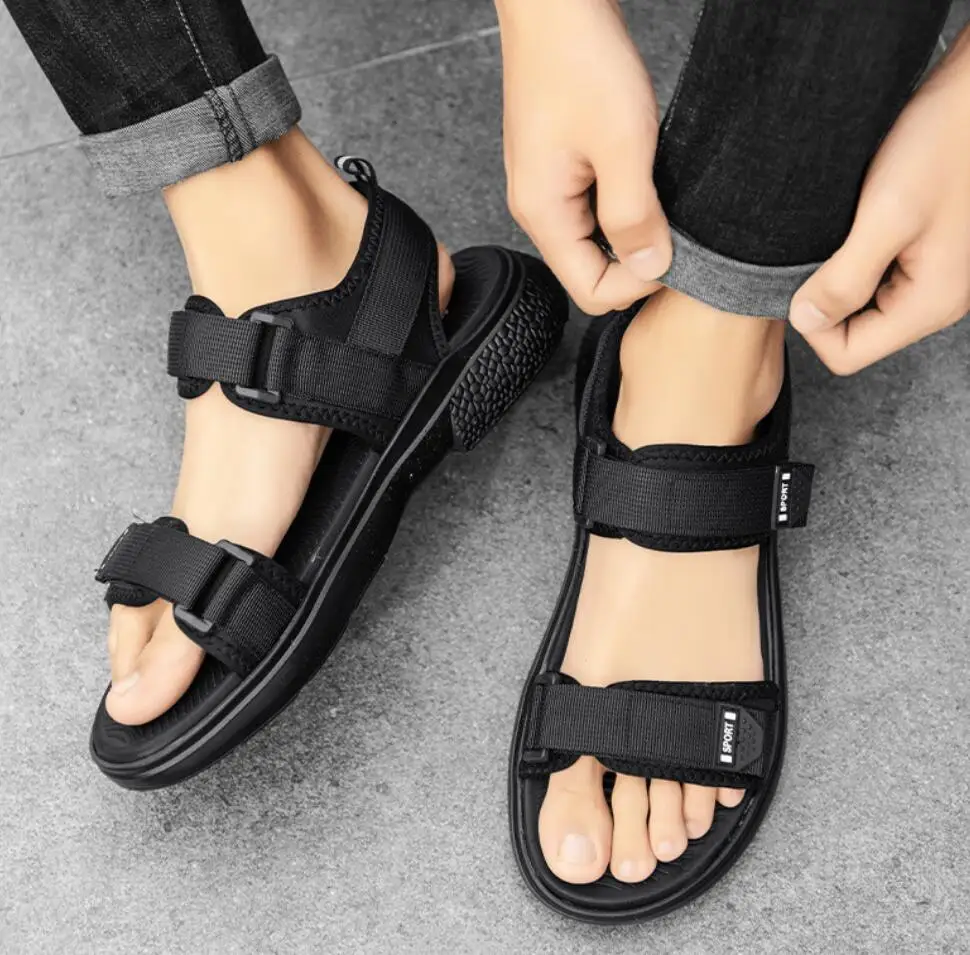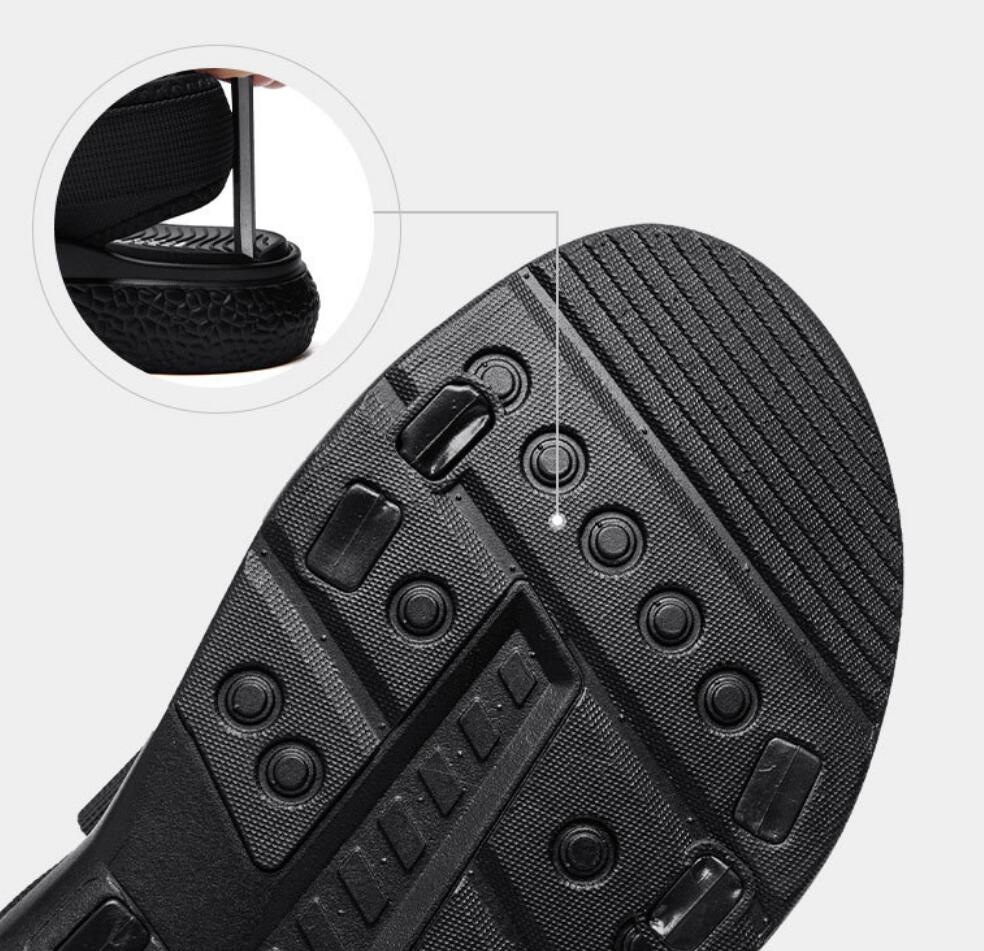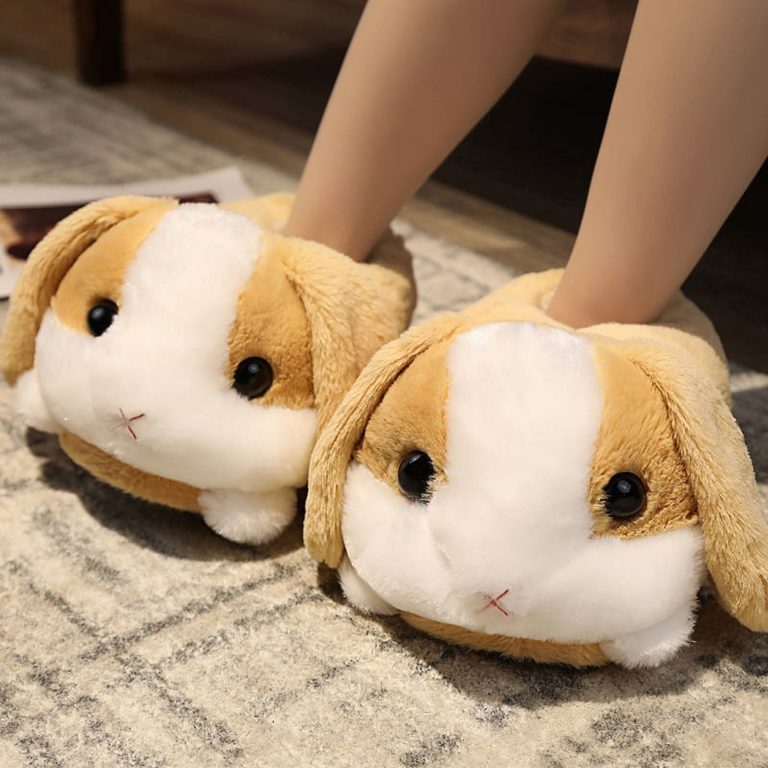Introduction
Beach sandals are essential for a successful summer adventure. They offer comfort and protection while allowing your feet to breathe. Choosing the right pair can make all the difference in your beach experience. With so many options available, finding the perfect pair can feel overwhelming. This guide will help you understand the different types of beach sandals, what to look for when purchasing them, and how to care for your sandals to ensure they last.

The Importance of Beach Sandals
Comfort and Support
Comfort is a priority when spending long hours on your feet, especially at the beach. Beach sandals provide the necessary support to keep your feet comfortable throughout the day. High-quality sandals come with cushioned soles that absorb shock, reducing strain on your feet and joints. They also offer arch support, which is crucial for maintaining proper posture and preventing foot pain.
Protection from the Elements
The beach environment can be harsh on your feet. Hot sand, sharp rocks, and shells can cause injuries if you’re not careful. Beach sandals protect your feet from these hazards. They act as a barrier between your feet and the ground, preventing burns, cuts, and scrapes. Additionally, some beach sandals come with closed toes, offering extra protection against unexpected obstacles.
Versatility and Style
Beach sandals are versatile and stylish. They come in various designs, colors, and materials, allowing you to express your personal style. Whether you prefer a sporty look or a more elegant design, there’s a pair of beach sandals for everyone. These sandals can easily transition from the beach to casual outings, making them a practical choice for summer footwear.
Types of Beach Sandals
Flip-Flops
Flip-flops are the most popular type of beach sandal. They are simple, lightweight, and easy to slip on and off. Flip-flops are perfect for short walks on the beach or lounging by the pool. However, they may not provide enough support for extended wear or vigorous activities.
Materials and Durability
Most flip-flops are made from rubber or foam, making them affordable and durable. Some high-end versions feature leather straps and cushioned footbeds for added comfort. When choosing flip-flops, consider the material’s durability and how well it will hold up in wet conditions.
Arch Support
Many flip-flops lack arch support, which can lead to foot pain if worn for long periods. Look for flip-flops with contoured footbeds that provide better support. Brands like Reef and Olukai offer flip-flops designed with ergonomic features to enhance comfort.
Slide Sandals
Slide sandals offer more stability than flip-flops. They have a wide strap across the top of the foot, providing a secure fit. Slide sandals are ideal for walking on the beach, exploring tide pools, or playing beach sports. They are also easy to slip on and off, making them convenient for beach outings.
Material and Construction
Slide sandals come in various materials, including rubber, synthetic, and leather. Synthetic and rubber options are water-resistant and easy to clean, making them suitable for beach environments. Leather slides offer a more stylish look but require more maintenance to keep them in good condition.
Support and Cushioning
Look for slide sandals with cushioned footbeds and arch support. This will ensure that your feet stay comfortable even during extended wear. Some brands, like Adidas and Nike, incorporate their signature cushioning technologies into their slide sandals, providing excellent comfort and support.

Sport Sandals
Sport sandals are designed for active beachgoers. They feature adjustable straps, rugged soles, and enhanced support, making them suitable for various beach activities. Whether you’re hiking along the coast, playing beach volleyball, or participating in water sports, sport sandals provide the stability and protection you need.
Adjustable Straps
One of the key features of sport sandals is adjustable straps. These allow you to customize the fit, ensuring that your sandals stay securely on your feet during activities. Look for sandals with multiple points of adjustment, such as those offered by Teva and Chaco, for a more personalized fit.
Rugged Soles
Sport sandals come with rugged soles designed to provide traction on different surfaces. This is especially important when navigating rocky beaches or slippery tide pools. Vibram soles, found in many sport sandals, offer excellent grip and durability.
Water Shoes
Water shoes are a hybrid between sandals and sneakers. They are designed for water activities, offering protection and support in wet conditions. Water shoes are perfect for snorkeling, kayaking, and exploring rocky shorelines. They have closed toes, mesh uppers, and non-slip soles, making them versatile and practical.
Breathable Mesh
Water shoes feature breathable mesh uppers that allow water to drain quickly and keep your feet cool. This prevents the shoes from becoming waterlogged and uncomfortable. Look for water shoes with quick-drying materials and antimicrobial treatments to reduce odor.
Non-Slip Soles
Non-slip soles are essential for water shoes. They provide the necessary traction to prevent slips and falls on wet surfaces. Brands like Merrell and Keen offer water shoes with specialized outsoles designed to grip in both wet and dry conditions.
Choosing the Right Beach Sandals
Fit and Comfort
Proper fit is crucial for comfort and support. When trying on beach sandals, make sure there is enough room for your toes to move freely. The straps should be snug but not too tight, preventing blisters and discomfort. Consider the shape of your foot and any specific needs, such as arch support or wide widths.
Trying Them On
Always try on beach sandals before purchasing. Walk around in them to ensure they are comfortable and supportive. Pay attention to how they feel on different surfaces, mimicking the conditions you’ll encounter at the beach. If possible, try them on at the end of the day when your feet are slightly swollen to ensure a proper fit.
Break-In Period
Some beach sandals may require a break-in period. Wear them around the house for short periods to allow the materials to soften and mold to your feet. This will help prevent blisters and discomfort when you wear them for longer durations.
Material Considerations
The material of your beach sandals affects their comfort, durability, and suitability for different activities. Rubber and synthetic materials are ideal for water resistance and easy maintenance. Leather offers a stylish look but requires more care. Consider the environment and activities you’ll be engaging in when choosing the material.
Water Resistance
If you’ll be spending a lot of time in the water, opt for beach sandals with water-resistant materials. Synthetic and rubber sandals are excellent choices as they dry quickly and are easy to clean. Avoid leather sandals for water activities as they can become damaged and require more maintenance.
Durability
Durability is essential for beach sandals, as they need to withstand harsh conditions. Look for sandals with reinforced stitching, sturdy soles, and high-quality materials. Investing in durable sandals will save you money in the long run and provide better protection for your feet.
Style and Versatility
While functionality is important, style should not be overlooked. Choose beach sandals that match your personal style and can transition from the beach to casual settings. Versatile designs allow you to get more use out of your sandals, making them a worthwhile investment.
Matching Your Wardrobe
Consider the colors and designs of your beach sandals in relation to your wardrobe. Neutral colors like black, brown, and tan are versatile and can be paired with various outfits. If you prefer a pop of color, choose sandals that complement your beachwear and casual clothing.
Multi-Purpose Use
Versatile beach sandals can be worn for different occasions, not just at the beach. Look for designs that can transition from sandy shores to casual outings, such as barbecues, picnics, or shopping trips. This will maximize the use of your sandals and provide more value for your money.
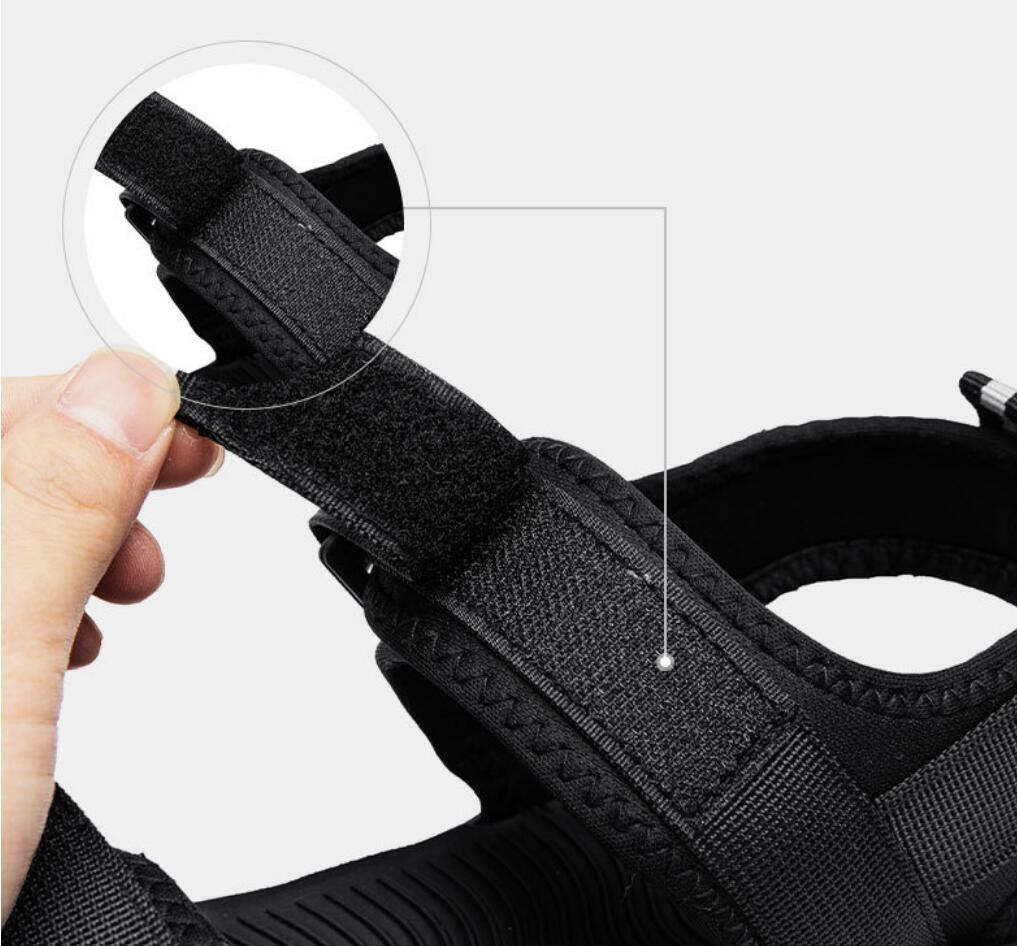
Caring for Your Beach Sandals
Cleaning and Maintenance
Regular cleaning and maintenance are essential to keep your beach sandals in good condition. Sand, saltwater, and dirt can cause wear and tear if not properly cleaned. Follow these steps to care for your sandals:
Rinse After Use
After each use, rinse your beach sandals with fresh water to remove sand, salt, and debris. This prevents buildup that can cause damage over time. Allow them to air dry completely before wearing them again.
Deep Cleaning
For a deeper clean, use mild soap and a soft brush to scrub away dirt and stains. Avoid harsh chemicals and abrasive brushes that can damage the material. Rinse thoroughly and let your sandals air dry.
Storage Tips
Proper storage extends the life of your beach sandals. Keep them in a cool, dry place away from direct sunlight to prevent fading and deterioration. If possible, store them in a breathable bag or container to protect them from dust and moisture.
Avoid Direct Sunlight
Prolonged exposure to direct sunlight can cause the materials in your beach sandals to fade and weaken. When not in use, store your sandals in a shaded area to preserve their color and integrity.
Use a Storage Bag
Consider using a breathable storage bag to keep your beach sandals clean and protected. This is especially useful when traveling, as it prevents dirt and sand from getting into your luggage.
Repair and Replacement
Even with proper care, beach sandals will eventually show signs of wear. Know when to repair minor issues and when it’s time to replace your sandals.
Minor Repairs
For minor issues like loose straps or worn soles, consider repairing your sandals. Many brands offer repair services or sell replacement parts. DIY repairs can also extend the life of your sandals.
Knowing When to Replace
When your beach sandals show significant wear and no longer provide adequate support, it’s time to replace them. Worn-out sandals can cause discomfort and increase the risk of injury. Investing in a new pair will ensure your feet stay protected and comfortable.
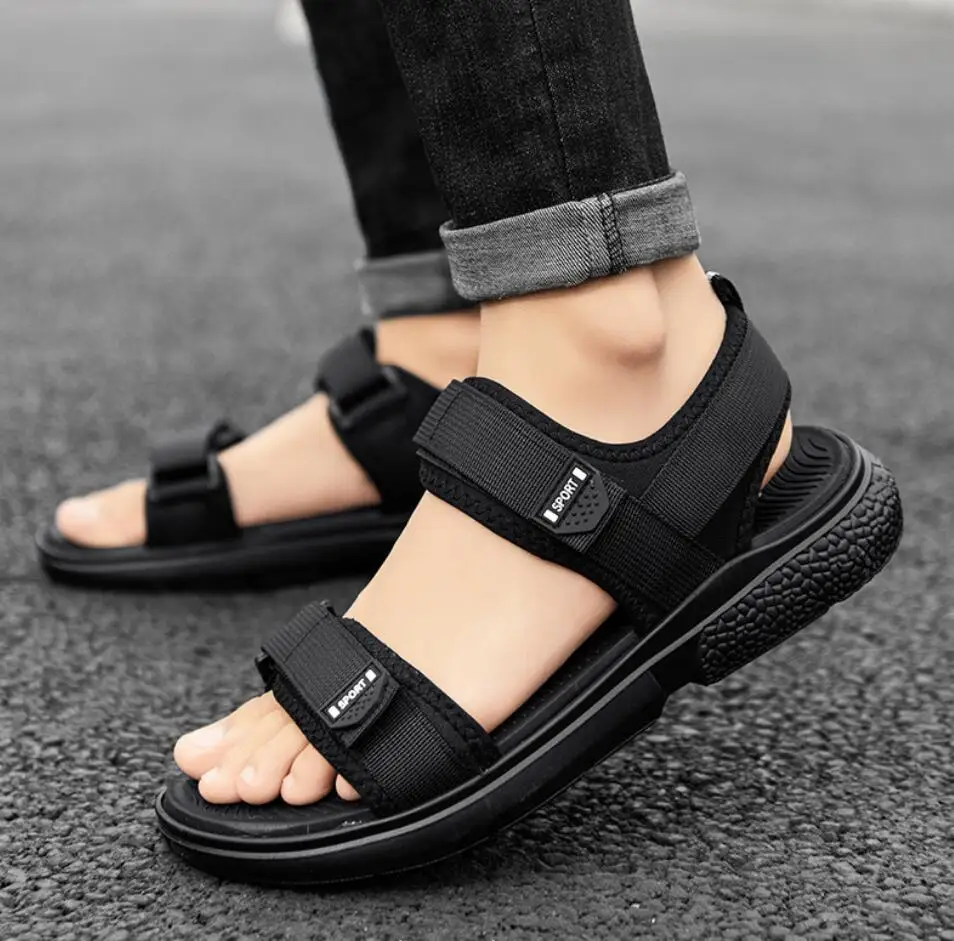
Top Brands and Recommendations
Reef
Reef is known for its comfortable and stylish beach sandals. Their flip-flops feature cushioned footbeds and arch support, making them ideal for extended wear. Reef also offers eco-friendly options made from recycled materials.
Teva
Teva sport sandals are perfect for active beachgoers. With adjustable straps and rugged soles, they provide excellent support and stability. Teva’s unique designs and bold colors add a touch of style to your beach attire.
Chaco
Chaco sandals are designed for durability and comfort. Their adjustable straps and contoured footbeds offer a customizable fit. Chaco’s rugged soles provide traction on various surfaces, making them suitable for adventurous beach activities.
Olukai
Olukai combines style and comfort in their beach sandals. Their flip-flops and slides feature ergonomic designs and premium materials. Olukai sandals are perfect for those who want a blend of elegance and functionality.
Keen
Keen water shoes are ideal for water activities and exploring rocky shorelines. Their closed-toe designs offer extra protection, while the breathable mesh uppers keep your feet cool. Keen’s non-slip soles provide excellent traction in wet conditions.
Conclusion
Beach sandals are an essential part of your summer wardrobe. They offer comfort, protection, and style for your beach adventures. By understanding the different types of beach sandals and knowing what to look for, you can find the perfect pair to suit your needs. Proper care and maintenance will ensure your sandals last, providing you with comfort and support throughout the summer. Whether you prefer flip-flops, slide sandals, sport sandals, or water shoes, there’s a perfect pair waiting for you. Invest in high-quality beach sandals and enjoy your beach days to the fullest.
